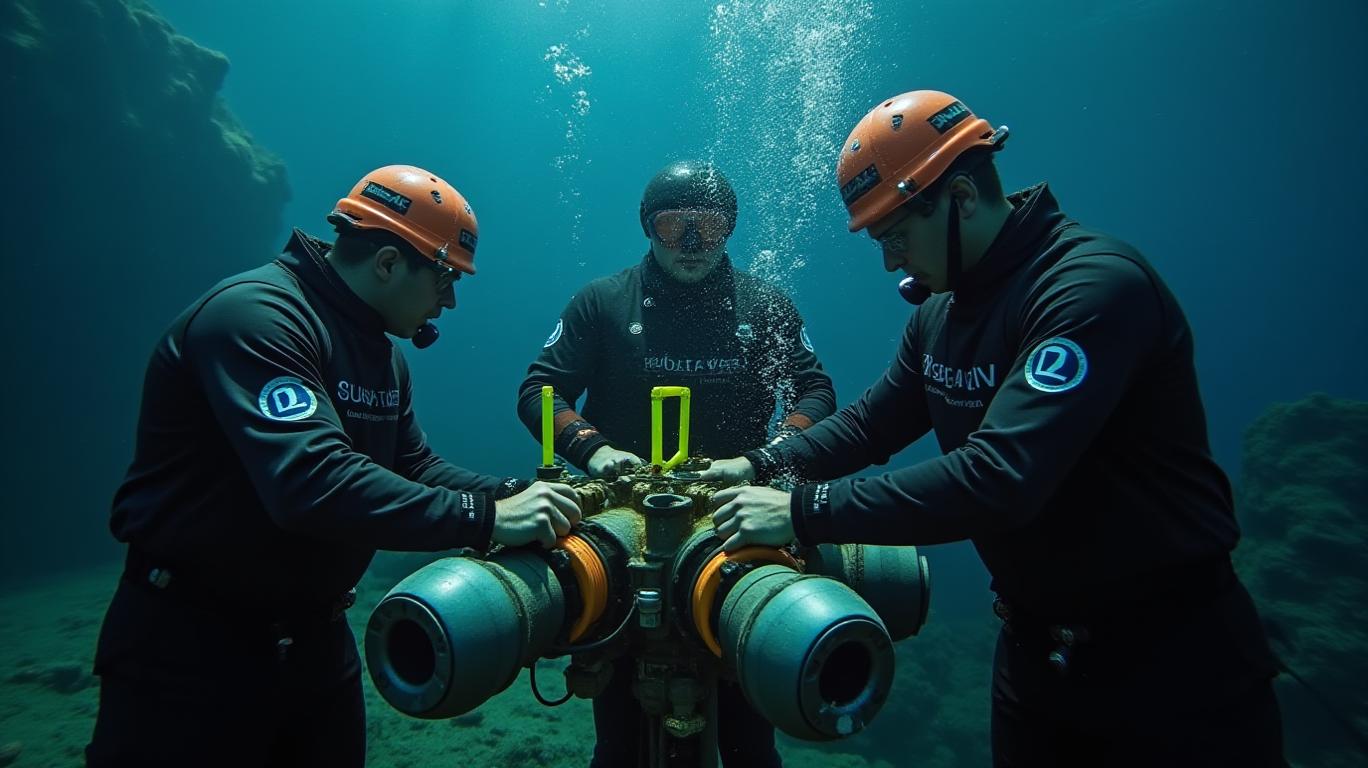Subsea7 and SLB OneSubsea Secure Strategic EPCI Contract for bp’s Ginger Project: A Catalyst for Subsea Innovation and Energy Transition?
The Subsea Integration Alliance (SIA), a partnership between Subsea7 and SLB OneSubsea, has secured a pivotal Engineering, Procurement, Construction, and Installation (EPCI) contract for bp’s Ginger project offshore Trinidad and Tobago. Valued between $150 million and $300 million, the deal underscores the growing demand for advanced subsea solutions as oil majors like
pivot toward optimizing marginal fields and accelerating energy transition initiatives. This contract not only highlights the SIA’s technical prowess but also signals a strategic shift toward standardized, scalable infrastructure that could redefine the economics of shallow-water oil and gas production.
The Ginger Project: A Blueprint for Subsea Efficiency
The Ginger project, located in water depths up to 90 meters, represents a critical test case for bp’s broader strategy to revitalize mature fields through cutting-edge technology. Subsea7 will supply a diver-installed tie-in system and flexible flowlines, while SLB OneSubsea will deliver four monobore subsea trees and tubing hangers—a first for the region. Crucially, SLB OneSubsea is also providing Trinidad and Tobago’s first high-integrity pressure protection system (HIPPS) manifold, which eliminates traditional high-pressure hydraulic systems, reducing operational risks and environmental exposure.
This technology could prove transformative. HIPPS manifolds, by enabling remote-controlled shutdowns, reduce the need for human intervention in hazardous conditions, while their modular design allows for faster installation and lower lifecycle costs. bp has emphasized that such innovations are central to its goal of achieving net-zero operations by 2050, as they minimize carbon footprints and operational inefficiencies.
Strategic Framework and Financial Implications
The contract is part of a new global framework agreement between bp and the SIA, designed to foster system-level optimization through early collaboration and transparency. This model prioritizes total cost of ownership over project-specific savings, aligning incentives across engineering, construction, and long-term operations. For Subsea7, the deal reinforces its position as a leader in shallow-water EPCI services, a market increasingly critical for operators seeking to extract value from underutilized fields.
Subsea7’s stock has risen steadily since 2023, reflecting investor confidence in its backlog of EPCI contracts. The Ginger project, while not a single blockbuster deal, adds to a growing pipeline of opportunities in the Caribbean and Latin American basins. Meanwhile, the SIA’s focus on standardized subsea systems—such as the monobore trees—reduces customization costs, making projects like Ginger financially viable where they might otherwise be marginal.
Regional and Operational Risks
Trinidad and Tobago’s energy sector faces challenges, including aging infrastructure and regulatory uncertainties. However, the Ginger project’s timeline—engineering underway now, offshore work in 2026, and first gas by 2026—suggests confidence in navigating these hurdles. bp’s 40-year history in Trinidad, combined with the SIA’s regional expertise, provides a robust foundation.
bp has increasingly allocated capital to low-carbon projects and mature field optimization, with the Ginger project aligning with its $5 billion annual investment target for such initiatives. However, delays in permitting or unexpected cost overruns could strain margins, particularly if commodity prices remain volatile.
Conclusion: A Niche Leader in a Transforming Market
The Subsea7-SLB OneSubsea partnership has positioned itself as a key player in the subsea sector’s evolution, leveraging standardized technology and collaborative frameworks to address the challenges of aging fields. The Ginger project’s emphasis on HIPPS and modular systems demonstrates how innovation can unlock stranded reserves while advancing environmental goals—a dual win for investors.
With a contract value potentially exceeding $200 million and execution timelines tightly aligned with bp’s production targets, this deal strengthens Subsea7’s earnings visibility and underscores the SIA’s role as a preferred partner for complex subsea projects. For investors, the collaboration highlights a scalable model that could be replicated in other shallow-water basins, offering long-term growth opportunities. As the energy transition accelerates, companies like Subsea7 that blend technical expertise with operational agility are likely to secure a premium in an increasingly competitive sector.
In short, the Ginger project is more than a contract—it’s a strategic bet on subsea innovation as the new frontier for oil and gas efficiency.

Comments
No comments yet